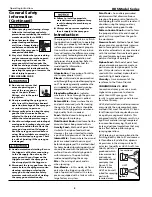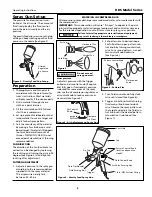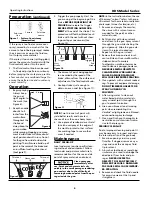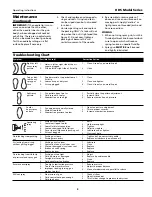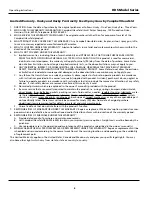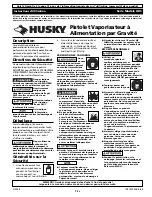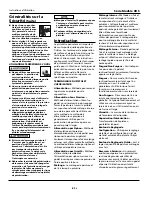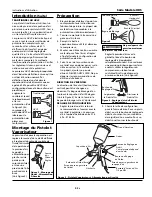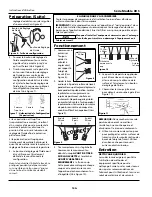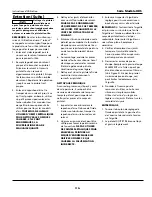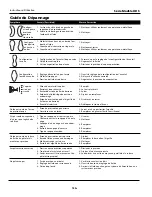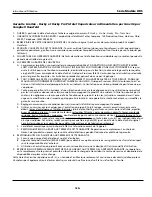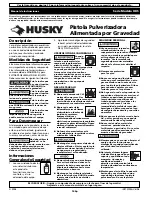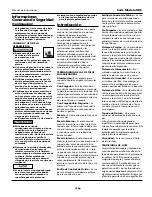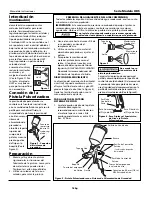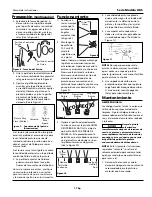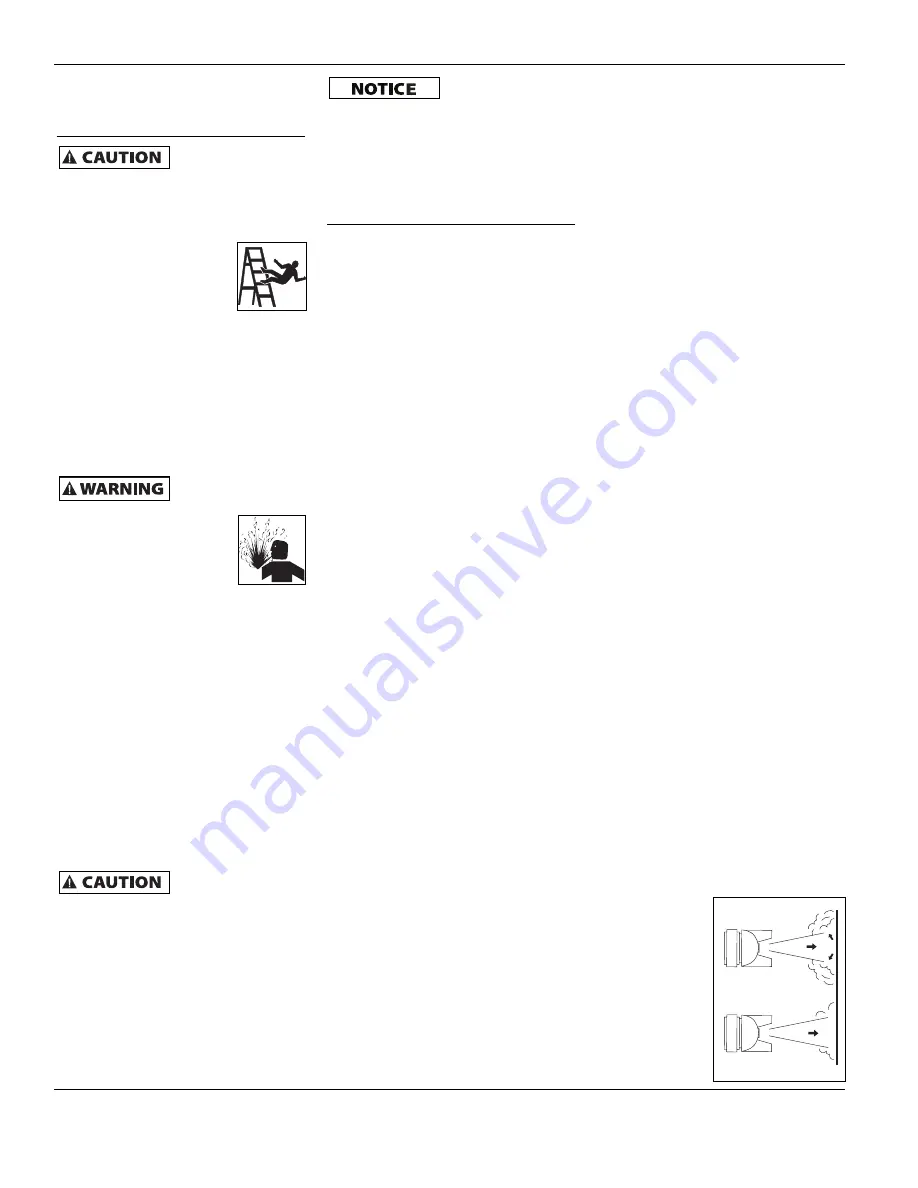
2
Operating Instructions
When spraying and cleaning, always
follow the instructions and safety
precautions provided by the material
manufacturer (Refer to MSDS).
Do not overreach. Keep
proper footing and balance
at all times. Proper footing
and balance enables better
control of the spray gun in
unexpected situations.
Stay alert. Watch what you are doing
and use common sense when operat-
ing the spray gun. Do not use the
spray gun while tired or under the
influence of drugs, alcohol, or medica-
tion. A moment of inattention while
operating the spray gun increases the
risk of injury to persons.
TOOL USE AND CARE
Do not use pressure that
exceeds operating pres-
sure of the spray gun or
any of the parts (hoses,
fittings, etc.) in the paint-
ing system.
Over pressurizing the spray gun is
able to result in bursting, abnormal
operation, breakage of the spray gun
or serious injury to persons.
Always verify prior to using the spray
gun that the air source has been
adjusted to the rated air pressure or
within the rated air-pressure range.
Check for misalignment or binding of
moving parts, breakage of parts, and
any other condition that affects the
spray gun’s operation. If damaged,
have the spray gun serviced before
using. Many accidents are caused by
poorly maintained spray guns. There
is a risk of bursting if the spray gun
is damaged.
Avoid unintentional starting. Be sure
the trigger is off before connecting
to the air supply. Do not carry the
spray gun with your finger on the
trigger or connect the spray gun to
the air supply with the trigger on.
Disconnect the spray gun from the air
source before, changing accessories,
cleaning, servicing or storing the
spray gun. Such preventive safety
measures reduce the risk of starting
the spray gun unintentionally.
Failure to install appropriate
water/oil removal equipment may
result in damage to machinery or
workpiece.
Always use a pressure regulator on
the air supply to the spray gun.
Introduction
The spray gun is a vital link in any finish-
ing application. In addition to operating
the spray gun properly, techniques of
surface preparation and paint prepara-
tion must be understood. These instruc-
tions will explain the differences among
various spray technologies and serve as
a guide in the proper operation and
techniques of spray painting. Refer to
the Replacement Parts Manual for
model specific information.
SPRAY GUN TERMS
Atomization -
Conversion of bulk liq-
uid to spray droplets (mist).
Bleeder –
In this mode, air passes continu-
ously through the gun whether spraying or
not. This mode is generally used when the
air is supplied by a continuously running
compressor that does not have a tank.
Bleeder/Non-Bleeder –
Indicates
whether air flows through the gun con-
tinuously or as the trigger is pulled.
External Mix –
Process where the air
and paint are mixed just after leaving
the nozzle. This type of mix should be
used for fast drying paints and when a
high quality finish is needed.
Feed –
Method used to bring paint
into the gun for spraying.
Fluid Control Knob –
Used to control the
amount of paint being mixed with air.
Gravity Feed –
Method of paint feed
similar to the siphon feed method.
However, the cup is inverted to create
a positive fluid pressure at the nozzle.
Internal Mix –
Process where the air and
paint are mixed inside the air cap just
before being sprayed. This method is best
for heavy bodied, slow drying paints and
can only be used with the pressure feed
method. Do not use fast drying paints
with internal mix. The paint will dry
inside and quickly clog the air cap.
Mix –
The mixing of paint and air
when spraying.
Non-Bleeder –
In this mode, air flows
only when the trigger is pulled. This
type of operation is used with a com-
pressor equipped with a tank or with a
large factory air system.
Paint Tank –
An auxiliary pressurized
paint reservoir that allows continuous
spraying of large amounts of paint with-
out stopping for refills as with a canister. It
also allows using the spray gun at any
angle without causing paint to drip.
Pattern Control Knob –
Used to form
the proper pattern (size and shape) of
paint as it is sprayed from the gun to
the workpiece.
Pressure Feed –
Method of paint feed
where a canister or paint tank is pressur-
ized to force paint to the gun. Either
internal or external mix air caps are used
with this method. Pressure feed is gener-
ally used for spraying heavy bodied
paints or for large size projects.
Siphon Feed –
Method of paint feed
where atmospheric pressure creates a
partial vacuum to siphon paint to the
gun. Only external mix air caps are
used with this method. Siphon feed is
used with light bodied paints.
Viscosity –
A measurement of the
resistance to the flow of liquids.
CONVENTIONAL VS. HVLP
Conventional spray guns use a much
higher air cap pressure to atomize
paint than HVLP spray guns. This
results in more overspray and a lower
transfer efficiency.
HVLP, electrostatic and airless processes
are currently the only compliant spray
methods that meet the strict 65% trans-
fer efficiency criteria required by some
air quality management districts. This
enhanced transfer efficiency results in a
significant material savings compared
to conventional spraying. Check local,
state and national regulations that may
be in effect before performing any
spraying operations.
HVLP spraying is a growing trend in the
finishing industry due to its environmen-
tal friendliness. By definition, dynamic
air pressures in the air cap must be 10
psi or less to qualify as HVLP. A soft, low
velocity pattern is
produced which
increases control
and reduces
bounceback and
overspray (See
Figure 1). For
these reasons,
HVLP is also well
suited for spraying
parts with
recessed areas.
Figure 1
Conventional
HVLP
General Safety
Information
(Continued)
HDS Model Series


